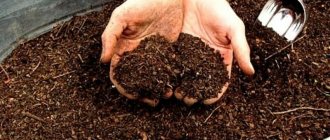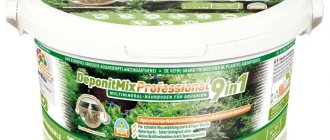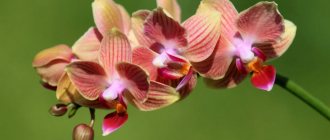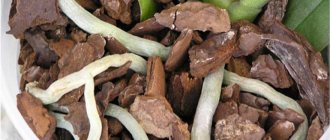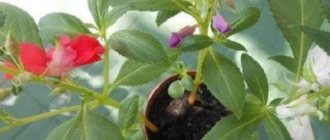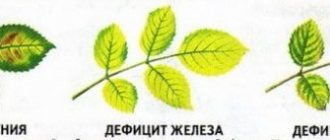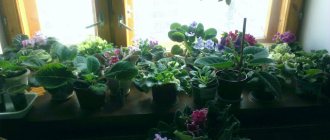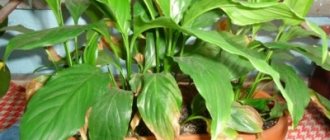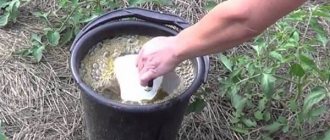What kind of food waste is not used as fertilizer for flowers! Leftover tea and coffee, eggshells, banana peels. But the most popular and effective was and remains ash, which we will talk about in more detail today.
Many gardeners use ash as fertilizer for indoor and outdoor flowers. It is applied both in dry form and in the form of infusion. Ash saturates home plants with micro- and macroelements and protects them from diseases and pests. It is also rich in minerals, does not contain impurities harmful to humans and pets, and is of natural origin. What is especially important is that the ash has no expiration date, it is quickly absorbed by plants and can be obtained independently.
Composition of wood ash as fertilizer
Wood ash is the result of combustion products of various trees, grass and other plant crops. Therefore, it contains many useful substances, minerals and salts of various elements. Its use as a fertilizer is very justified.
Some substances in the ash activate plant growth, enhance seedlings, while others increase immunity and resistance to adverse conditions. However, the exact composition of wood ash is almost impossible to determine, since it depends on the raw materials that were burned. Its chemical composition contains alkaline earth metals, iron, phosphates, calcium, potassium, magnesium, carbonates and other elements.
Potato
Unfortunately, ash is often presented as a universal super remedy - it replaces store-bought potassium fertilizers, increases productivity, and contributes to an increased content of starch in tubers. But all this is true only for potatoes grown in acidic soils. Whereas when adding ash to potatoes on neutral soils, the pH may shift above 5.5, as a result of which the risk of developing a disease dangerous for potatoes such as scab increases.
What plants love ash as fertilizer?
In general, ash in the garden as a fertilizer is useful for almost all plants. But some cultures respond particularly well to it. The following garden plants love ash:
- potatoes - scatter ash 300 g per 1 sq. m when digging the ground, and also dust it during the season. Ash is especially needed during budding and when fighting the Colorado potato beetle;
- eggplants, cucumbers, zucchini and squash - add a glass when preparing the bed, when planting in a hole and then for each plant during the season;
- cabbage - a couple of glasses when preparing the bed or directly into the hole;
- bell and hot peppers, tomatoes – 500-600 g per 1 sq. m when digging or a handful at once into the hole;
- dill, parsley, lettuce - 200-300 g per bed, scattered and loosened before planting;
- legumes - also scattered over the garden bed and buried a little in the ground - 1-2 cups per 1 square meter. m;
- grapes - add a bucket of liquid ash solution several times a season;
- roses - fed during the season or applied in the fall before planting bushes.
Parsley, dill and lettuce, carrots will not refuse ash. It is applied in the fall or spring when preparing beds; it can be sprinkled as protection and prevention against pests.
Hydrangea
This flower “loves” acidic soil - it is not only planted on it, but also periodically fed with special acidifying solutions during the summer season. The use of ash in a flower garden with hydrangea before the formation of buds leads to pale and short flowering, and after flowering begins, to a weakening of this perennial as a whole, as a result of which, theoretically, the hydrangea may not survive the winter.
When not to use ash
Despite all the benefits, ash in the garden should be used wisely. There are a number of cases when its use is not beneficial and can even cause the death of plants.
Not all garden crops will be happy with such feeding. Plus, ash is contraindicated if the soil is already too alkaline.
You should also refrain from using wood soot after recent use of nitrogen-containing fertilizers, such as manure, urea, ammonium nitrate, bird droppings and others. The fact is that nitrogen neutralizes the effect of ash.
Fertilizer Compatibility Chart
What plants should not be fertilized with ash?
Ash is not suitable for plants that prefer acidic soils. These include:
- radish;
- watermelons;
- azaleas and hydrangeas;
- roses and zinnias;
- sorrel;
- blueberry.
As a top dressing, ash is not suitable for trees and bushes such as viburnum, juniper, thuja, spruce and larches.
Also, wood ash is not suitable for feeding young seedlings, since the high content of mineral salts has a negative effect on the growth and development of plants.
How does ash in the garden affect the soil?
Ash acts as an excellent natural fungicide and insecticide. Regular use when preparing beds helps to minimize damage by various pests, especially those that reproduce and overwinter in the soil - the Colorado potato beetle, slugs, ants and cabbage midges, as well as infection with fungal diseases - various types of rot, powdery mildew, etc.
Necessary information:
- How to deal with slugs in the garden
- How to remove ants from your property
It is important to take into account the effect of wood ash on the acidity and composition of the soil. First of all, it is used as a soil deoxidizer. It improves soil quality and reduces acidity. Therefore, it is necessary for crops that love alkaline or neutral soils.
Ash accelerates the processing of organic substances, turning them into a form available for plant nutrition. It contains many microelements, therefore it increases the saturation of the soil with useful substances: potassium and calcium, magnesium, phosphorus, sulfur and iron. All these substances have the following effects:
- Thanks to calcium, green growth is enhanced;
- Potassium is needed for active flowering and fruiting of plants;
- Sodium is necessary for water balance and alkalization of the earth;
- Phosphorus strengthens heat-loving plants;
- Silicon promotes better absorption of microelements;
- Thanks to magnesium, it improves photosynthesis;
- And chlorides increase resistance to fungal diseases.
Thus, adding ash when digging future beds reduces the level of acidity, it protects plants from diseases and pests. It contains more than 30 elements that help maintain the appearance of plants and improve taste.
Benefits of use
When using the drug in their garden plots, many gardeners note a significant positive effect:
- Soil pH is adjusted;
- The supply of many nutritional components of the earth is replenished;
- Plant immunity is strengthened;
- Increases resistance to frost in heat-loving crops;
- Stimulation of the development of botanical crops due to an improved metabolic process and activation of photosynthesis;
- The processes of formation of ovaries and the timing of fruit ripening are accelerated, their taste and commercial properties are improved, etc.
In addition to its direct purpose, ash as a fertilizer is often used as a powerful fungicidal and insecticidal agent. The drug contains unique phenolic compounds and special odorous substances that can effectively repel pests and counteract the development of pathogenic microflora. The alkaline nature of ash has a detrimental effect on the proliferation of mold and putrefactive fungi, which significantly inhibits their appearance on plants.
Which ash is better for fertilizer?
You can burn almost anything: trees, bushes, grass, tops after harvest, or even paper. But not all of the resulting ash will be useful as fertilizer. This can be used to protect against pests or as an antifungal agent.
The most useful is the ash from the combustion of deciduous trees. The ash after burning grass contains quite a bit of calcium, and the ash from coniferous trees is poor in useful substances and is often not suitable as a fertilizer. It is used to control pests: beetles, midges, butterflies, ants and slugs. Its smell and taste are unpleasant to them.
Sorrel
The plant prefers moist, neutral and slightly acidic areas. Sorrel is grown only in such conditions, otherwise the leaves will become coarse due to an excess of oxalic acid.
Excess ash fertilizer leads to growth stagnation and lack of seeds for further reproduction.
Summer residents are accustomed to scattering ash from the barbecue and stove over all the beds, but this harms those plants that do not like alkaline soil. A reasonable approach to farming will eliminate many problems in growing a good harvest.
- Author: iarriba
Rate this article: (0 votes, average: 0 out of 5)
Wood ash as fertilizer
One of the main uses of ash in the garden is as fertilizer. As mentioned above, it is a storehouse of useful microelements that are needed for the growth and development of plants. It stimulates the immune system, improves appearance and quality of taste. There are several ways to apply fertilizer - choose the one that is most convenient for you.
Aqueous solution of ash for feeding
The fastest and most affordable option for feeding plants at the root and foliar. The ash is diluted in warm water, and then the plant is watered. You can also spray with an aqueous solution. The advantage is that there is no need to infuse the mixture. It can be used immediately after guidance.
Liquid fertilizer is prepared from 0.2-0.3 kg of substance and 10 liters of water. You can feed the plants every two weeks throughout the season.
How to infuse ash for feeding
Useful fertilizer is prepared from the ash. To do this, fill the bucket one third with fresh ash, and fill the rest with boiling water. Leave the mixture in a dark, warm place for two days. After the infusion, strain through a fine sieve.
The resulting solution is used for watering at the root and spraying as foliar feeding.
Feeding with dry ash
But most often, garden ash is used in dry form. It is added to the soil when digging in the fall or preparing beds in the spring after the snow has melted. It is more important to apply it in the spring, so that melt water does not wash away nutrients. But if the soil is heavy, then it is enough to add ash in the fall.
Sprinkle 200-300 g per square meter of bed. You can also sprinkle it directly into the hole, mixing it with the soil when planting. You need to add a little so that the ash does not cause a burn to the roots. Ash is also sprinkled on sprouts, leaves and stems of seedlings and adult plants. The quantity varies from 0.5 cups to two.
Spraying with ash
To keep the ash on the surface of crops longer, it is mixed with water: first, water it or sprinkle it on the leaves, and then dust it with wood ash.
The procedure is carried out in the morning or evening, when there is no bright sun. You can also dust in the morning when there is dew or immediately after rain.
Optimal schedules
When it comes to the question of how to fertilize with ash, experienced summer residents and amateur gardeners adhere to the following fertilizing scheme:
- The first application is provided in early spring before arable land for light, loose sandy loam and sandy soils and during autumn digging for heavy loams. After the snow cover has melted and the temperature optimum has been established at +5 ° C, the drug is scattered over the surface of the earth at a rate of 150-180 g per hundred square meters.
- Repeat the procedure when planting plants in open ground, mixing the substance with the main soil along the planting furrow or in each planting hole.
- Approximately 21-30 days after the young shoots have strengthened, spray on the leaf, diluting 0.25-0.35 kg of ash in a bucket of water and, after thoroughly stirring, use immediately. Repeat the procedure every 14-21 days throughout the season.
Experienced gardeners advise using wood ash as a fertilizer for seeds and seedlings, which stimulates germination and activates the development of tomatoes, eggplants, cucumbers, zucchini, cabbage, etc. To do this, prepare a stock solution from a kilogram of the substance dissolved in a standard bucket of water. After thoroughly stirring, the mixture is kept for 48-72 hours in a dark place and the composition is used for soaking seeds for several hours or overnight, or for root feeding of seedlings, 50-100 ml per bush.
Treatment with ash from pests
Garden ash is also used as a disinfectant against pests. It helps against aphids, ants, slugs, Colorado potato beetles, midges and beetles, and wireworms.
They powder her:
- cabbage for butterflies and cruciferous flea beetles;
- potatoes from the Colorado potato beetle;
- All root crops from wireworms are buried in the ground. About the fight against wireworms. we wrote here.;
- onion feathers from midges.
A solution of ash with laundry soap and urea 20 g is an effective remedy for aphids for both herbs, bushes and trees.
Rhododendron
It is believed that he is unpretentious and can endure anything. But such a simple remedy as ash can easily destroy a bush. More precisely, when adding ash, rhododendron runs a high risk of developing chlorosis. This disease is characterized by the fact that it interferes with the processes of photosynthesis. And it is important to emphasize that rhododendron, in principle, does not like mineral fertilizers, especially potassium fertilizers, which stop applying in July.

